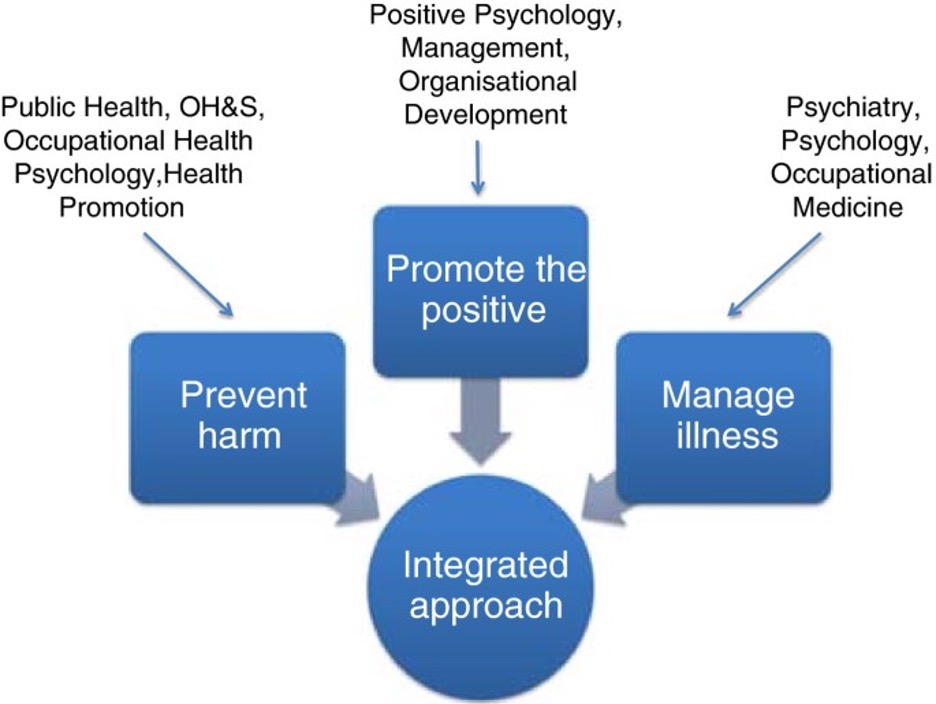
Why we need to make workplace mental wellbeing the norm
We need to talk.
During these peculiar times there has been a lot of talk about the growing mental health crisis, the loneliness epidemic, the level of angst, anxiety and ongoing uncertainty around when can we expect to return to a life that we recognise as more normal.
There’s no denying the global pandemic has served to amplify much of what wasn’t working well in our society prior to its arrival. However, one positive outcome of this has been the growing public awareness of the prevalence of mental health challenges in the workplace and a desire to do better, to get better at identifying those vulnerable to mental health issues, those living with mental health issues and to provide adequate and timely access to mental health services.
In the first quarterly Fortune/Deloitte Survey for 2021, 98% of the 100 CEOs surveyed agreed that employee mental health and well-being will be a priority, even after the pandemic is over. Nice to know, but what does that mean or look like?
Because until now the critical piece in workplace health and wellbeing programs has been missing.
The need to make mental wellbeing the norm.
What has been ignored is that not everyone at work is mentally unwell. But many are struggling to cope with ongoing high levels of stress, feeling exhausted and worried they may be burning out. In the majority of conversations I’ve had over the last year with CEO’s, managers and employees what they want is to know how to manage their current situation better and what needs to be put in place to be best prepared for an uncertain future.
We’re talking about wellbeing. It’s what Lifestyle Medicine is all about. It’s about building awareness of what is possible to help us to stay healthy and mentally fit and to provide the necessary support and resources to enable people to achieve this.
The idea of integrating mental health and mental wellbeing is not new. It’s just taken a while for the idea that mentally healthy workplaces are good for people and business to get off the ground.
The changing face of the mental health conversation.
Shifting the focus to making workplace mental wellbeing the norm provides a number of potential benefits by preventing harm, promoting the positive and managing illness when it occurs.
It leads to
- The promotion of more open and honest conversations where it’s safe to speak up and share feelings without fear of being judged or worse still, ignored.
- Potentially reducing some of the stigma of having a mental health challenge
- The potential reduction of the number of people diagnosed with mental illness
- Less time off required for treatment and recovery from mental health challenges because their ability to function has not been compromised.
- The opportunity to examine and review existing job design and processes. Just because that’s the way it’s always been done, doesn’t imply it is effective, safe or efficient.
- Greater psychological safety which leads to enhanced collaboration and cooperation, more sharing of ideas, less risk aversion and more motivation.
The problem with existing workplace mental health strategies is that while well intentioned and the provision of Mental Health First Aid courses a good start, many employees I’ve spoken with are sick of being lectured to about mental health when they are not mentally ill themselves. What they tell me they want is how to stay mentally well, how to do their work well, to feel supported, acknowledged and more fulfilled by the work they do.
This is what enjoying high mental wellbeing does.
Wellbeing is defined as having the internal and external supports needed for us to work to our true potential, fruitfully, productively, able to cope with life’s normal stresses and contributing usefully to our communities.
Mental health and mental wellbeing are on two separate spectra that interact.
The mental health spectrum ranges from languishing to flourishing.

Those closer to languishing have a higher risk of developing a mental mood disorder such as anxiety or depression. Those at the flourishing end show no evidence of a mental health problem.
Where a person sits on the spectrum at any given time will be influenced by a number of different factors. High levels of stress, anxiety, poor sleep, family history or other illness can tip an individual towards languishing and mental health issues, unless they concurrently have a high level of mental wellbeing.
We can’t afford to ignore the need for greater mental wellbeing. Mental health insurance claims are on the rise and are extremely costly to the individual, their family and their workplace. The average cost being around $27,700 per employee and approximately 17 weeks off work, far higher and longer than for a physical injury claim.
What a mentally fit workplace looks like
Mental fitness or mental wellbeing incorporates physiological, emotional and social factors.
Physiological factors
As Lifestyle Medicine physicians and practitioners, you are already well versed in understanding the importance of healthy lifestyle choices and encouraging your clients to adopt them.
But it’s getting the corporates to understand this is much more than providing fruit bowls in the staff kitchen and discounted gym memberships.
The critical piece is to get buy in from the business leaders when they understand just how important health (physical and mental) and energy management is for sustainable high performance. Their commitment is essential for the success of any program. One of the key areas here beyond healthy nutrition, sufficient physical activity and enough good quality uninterrupted sleep being to ensure all employees have sufficient down time for rest and recovery.
Encouraging regular breaks between meetings, taking a proper lunch break away from the desk, discouraging multi-tasking has been shown to boost workplace productivity and lower stress levels. Following the ultradian rhythm those 90-120 minutes cycles of peaks and troughs of energy improves mental energy management, meaning more gets done in a shorter period of time, with fewer mistakes and the likelihood of getting home on time more often more possible.
Emotional factors
All emotions provide us with valuable data to help us to make better sense of our world. Happier employees have been shown to be more open minded, less risk averse, more productive, to take less sick or stress leave and are more likely to stay in their role for longer.
This is not a recipe for happy-clappy narcissistic let’s all dance round the office campfire behaviour but a recognition that all emotions are valuable to better cognition and decision making. What counts is recognising what is the most appropriate emotion for a given situation. It’s about learning how to nudge individuals towards a more positive frame of mind and a growth-oriented mindset that serves to build resilience, coping skills and what the psychologists call grit.
Connecting to your sense of purpose and meaning is highly motivating to get you bouncing out of bed in the morning and helps when facing challenge, change and adversity, like now. Practising to reappraise the situation you find yourself in, makes it easier to see the opportunity and options available that can otherwise get lost behind the mist of fear, misinterpretation or catastrophe thinking.
Self-leadership in this space is about scheduling time for those activities that bring you joy. Tuning in to what sets you up to have a great day might include taking the dog for a walk in the park, going for a run, spending time in nature, listening to music, getting creative or doing a meditation practice.
Social factors
The super-power of mental wellbeing lies in our ability to forge strong positive relationships with others. As social beings we have as Brene Brown reminds us an innate desire to belong, to feel part of a tribe. It creates a feeling of safety and as the world’s longest running longitudinal study the Harvard Study of Adult Development has revealed is what enables us to have a long and happy life. As the current director Dr. Robert Waldinger the current director shared, what makes the biggest difference to how well we age and how happy we are isn’t our cholesterol level when we are aged 50, it is the quality and strength of our closest relationships.
In addition, other research has shown it is about the number of social interactions we have on a given day with people we know and strangers. This is why during the pandemic we struggled so much during periods of enforced lock down and restricted social interactions. While Zoom and Microsoft Team meetings at least provide the opportunity for eye gaze, important for staying connected and associated with oxytocin release, there’s nothing that beats face-to-face interactions.
In the workplace, while unrealistic to expect to be best friends with everyone, knowing how to get along with others, how to reduce the impact the social pain of being snubbed or overlooked and how to nurture a culture of psychological safety matters. It’s been shown in the health system how feeling cared about and caring about others has been shown to reduce recovery time, while an empathetic doctor is likely to be rated more highly by their patients.
While in every workplace, higher psychological safety drives engagement, discretionary effort and effective teamwork and importantly serves to keep us mentally healthy.
Mental wellbeing in the workplace is not a one-size-fits-all formula. It can be easily integrated into any health and wellbeing program, is inexpensive and effective.
The question we need to be asking is can we afford NOT to ensure mental wellbeing is included in all workplace health and wellbeing programs?
This article has been written for the Australasian Society of Lifestyle Medicine (ASLM) by the documented original author. The views and opinions expressed in this article are solely those of the original author and do not necessarily represent the views and opinions of the ASLM or its Board.




